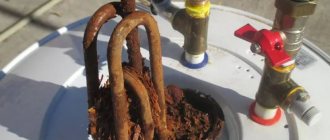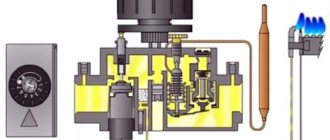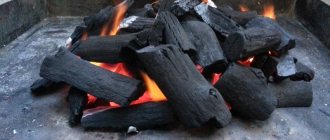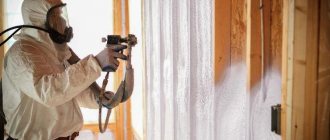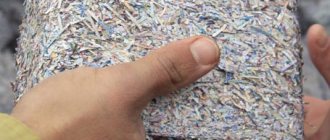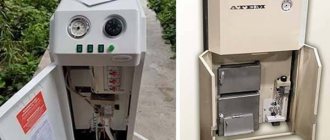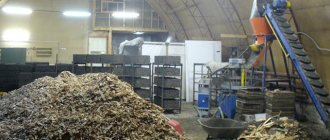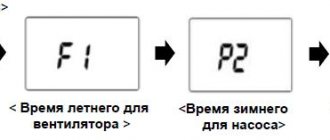Modern gas boilers are reliable mechanisms. But technology does not last forever, so equipment requires regular maintenance. The procedure includes checking the functionality of all parts and systems, and most importantly, cleaning them.
The procedure is not particularly complicated. Therefore, if there is no desire or opportunity to turn to professionals, it is quite possible to cope with it on your own. It is only important to understand the structure of the boiler and follow the technology for cleaning all parts.
When is it time to clean a gas boiler?
The frequency depends on the quality of the water and fuel that circulate in the boiler. Signs of a blockage may include:
- The gas boiler is working, but the house is still cold.
- You have started paying significantly more for gas.
- You hear the smell of burnt fuel.
And in order to deal with one of the problems and clean a gas boiler at home, you need to understand its structure. You have to remove the following nodes:
- Igniter (responsible for igniting the burner).
- Burner and nozzles.
- Filter (cleanses fuel from impurities).
- Heat exchanger (heats the coolant before it travels through the circuit).
- Firebox.
- Chimney.
Cleaning filters
Incoming filtering is necessary. If water is used as a coolant, the flow often contains fine sand, silt, scale, rust or metal shavings. Dirt entering the system can disrupt the operation of the input flow sensor, clog the heat exchanger, etc.
The filter and flow sensor are cleaned using ordinary running water and a brush with hard bristles. Next, before reinstallation, to soften the O-rings that prevent leakage, they need to be treated with silicone grease to achieve a tight connection.
Burner and nozzles: learning to clean
The burner is one of the important parts, since if it is clogged, gas costs will increase sharply. To clean the burner of a gas boiler, you need:
- Turn off the gas.
- Remove the burner from the boiler.
- Remove the injectors. And it’s better to take a picture of them before doing this, so that you can easily return them to their place later.
- Clean the injectors with a soft brush.
- Then remove dirt from the burner.
- Blow out the burner holes. A pump from a bicycle or car will help with this.
- Place the nozzles back into the burner.
- And return the burner to the boiler.
It is advisable to clean the gas boiler burner before each heating season.
Gas pressure adjustment
Measuring and adjusting the minimum and maximum gas pressure will not only achieve proper operation of the boiler, but also save money. The exact pressure range is indicated in the instructions. For wall-mounted boilers it is at least 2 mbar. The maximum pressure is 13 minibar.
If there are no errors, start the gas boiler and open the gas valve. Using a differential pressure gauge, we measure the minimum gas pressure in the system. To measure the maximum possible pressure, turn on the boiler in the “chimney sweep” mode and check the pressure in this mode. If necessary, adjust the pressure to the specified values.
How to clean a gas boiler filter?
As a rule, a gas filter is installed in front of the steam part on the line. And it serves to clean the fuel from impurities and dirt, due to which more soot is formed and the chamber and chimney become covered with scale faster.
To clean the gas filter you need:
- Remove the cover.
- Unscrew the plug from the flange.
- Remove the cassette or mesh, depending on what filter you have.
- Shake, blow or rinse with solvent.
- Put it in place.
The importance of correct gas pressure setting
When the pressure drops below acceptable values, the boiler automation is not able to accurately regulate the heating temperature and operates at maximum values. The electronics opens the maximum pressure and heats the boiler to the required temperature, but due to insufficient pressure, it is impossible to maintain the desired temperature. The automation shuts off the gas and, after reaching the minimum allowed temperature, again heats the boiler to the maximum in the maximum possible mode.
If the gas pressure exceeds the rated values, the flame height is too high. This can lead to premature burnout of the heat exchanger, which is not designed to operate in this mode.
Compare this with normal operating mode, in which the temperature is gradually brought to the required values, and then maintained at a minimum gas flow. In this case, gas consumption decreases due to the smooth dynamics of heating and cooling.
Cleaning the heat exchanger
The rate of heating of the room depends on the cleanliness of the heat exchanger. It shouldn't sit in your soot. And in order to clean the heat exchanger of a gas boiler at home, you need to take:
- Scraper.
- A stiff brush.
- Yorshik.
- Power tool.
Procedure:
- Shut off the gas supply.
- Remove the heat exchanger.
- Clean it with all the tools from the list.
- Put the part back.
Do not clean the gas boiler heat exchanger with sharp tools. Because if you damage it, corrosion will begin.
Often a layer of scale forms inside the heat exchanger. This usually happens due to poor quality coolant. And then the exchanger becomes clogged and the boiler does not work well. It is better to clean a Baxi or other gas boiler from scale:
- Acid.
- A ready-made preparation.
If you take sulfanilic or other acid, work carefully, as you can burn your hands or damage the knot itself.
Turbine maintenance
Gas boiler turbine
The exhaust fan ensures proper removal of carbon dioxide, soot and smoke after combustion of the gas mixture. After dismantling the fan, it is worth checking the chimney pipe leading to the street for clogging. The fan must be cleaned of dust and the shafts lubricated. The condensate collector leading to the turbine must be sealed.
How to remove scale?
A booster will also help clean a gas boiler from scale. This is a device that consists of several parts:
- Pump.
- Containers for funds.
- Heating element.
This is how a booster works. The product is heated in a container, and then, using a pump, it enters the heat exchanger. There, chemicals work and clean the unit from the inside, after which the spent product, along with the debris, comes out back.
The booster will help clean any pipes or heater.
Do not forget that you need to clean the heat exchanger of a gas boiler at home at least once a year. And if the coolant is weak, then even more. For example, when you use water from the tap.
If you don’t know how to clean a Navien gas boiler yourself, it’s better to call a specialist.
How to determine the need for cleaning
Gas boiler cleaning
Boiler manufacturers recommend servicing equipment once every 1 to 2 years. But the need for cleaning may arise more often, since it all depends on the operating conditions and the specific model. Most often, the heat exchanger needs unscheduled maintenance.
Expert opinion
Grebnev Vadim Savelievich
Heating system installer
When using low-quality water, the heat exchanger can become seriously scaly in just a few months. Boilers with atmospheric burners become covered with soot. Operating all models in dusty rooms leads to clogging of the igniter and burner.
But you shouldn’t disassemble the boiler on schedule just because it’s time for cleaning. In order not to take unnecessary actions, it is important to know the signs of clogging of internal parts and systems:
- slow heating;
- loss of power;
- increased gas consumption;
- pops when igniting;
- constantly working burner;
- extraneous noise during water movement;
- uncharacteristic odors from the boiler;
- difficult ignition;
- reduction of pressure in the water circuit;
- incorrect sensor readings;
- no reverse thrust.
The boiler should be inspected if at least one of these signs appears. But most often, several symptoms of contamination of parts are observed at once.
How to clean the firebox and chimney?
Combustion products remain in the firebox and on the walls of the chimney. Clean them with a brush or brushes, which you can buy in the store.
To clean a gas boiler from soot, you need:
- Turn off the gas.
- Remove the door, thermocouple, burner with nozzles.
- Remove the top cover.
- And remove the insulating sheet.
- Dismantle the chimney.
- Select a brush of the required size and clean the heat exchanger from soot. If necessary, you can even vacuum it.
- Clean the walls of the boiler with a brush and scraper.
- The pipe itself is cleaned with a brush or cable.
- Collect all nodes.
What solutions to use for cleaning
Acids and special products work well to remove scale accumulated on the walls of the heat exchanger:
Detex
A special liquid designed to remove traces of oxides, scale, and salts. Interacts well with products made of steel, cast iron or copper, increasing their service life
Lemon acid
Citric acid heated to 60 degrees is suitable for cleaning parts made of stainless steel, copper, and brass. The minimum concentration of the solution is 0.5%, and the maximum is 1.5%.
Oxalic acid
Clears scale and traces of rust without damaging painted parts. Suitable for all types of metal. A special product based on oxalic acid is “Solita”.
Sulfamic acid
Removes deposits that include metal oxides. Safe for most materials used in boiler assembly.
Hydrochloric acid
It has an aggressive effect on metal. It is permissible to use this substance as a last resort only for processing products made of stainless steel and copper.
The aggressiveness of the solution is reduced by additives that prevent the destruction of the metal shell of the product. It is extremely toxic, and when working with it, strict safety regulations must be followed.
Expert opinion
Grebnev Vadim Savelievich
Heating system installer
The disadvantage of chemical cleaning is the inability to control the interaction of acid not only with deposits, but also with metal elements of the boiler that are not susceptible to contamination. The harmful effects can be avoided by adding inhibitors to the acid to soften the effects of the acid.
Regular cleaning and maintenance of the gas boiler will ensure its uninterrupted operation and significantly extend its service life.
Cleaning technology
The boiler cleaning process consists of sequential steps:
- Turn off the boiler, turn off the gas supply and remove the cover (casing).
- Remove and clean sequentially the igniter, burner block, filter, heat exchanger.
- Install all dismantled parts in their places.
- Check the functionality of the boiler.
When disassembling and assembling threaded connections, be careful and do not use excessive force. Many boiler components are made of copper, so they are easily deformed and can be easily damaged if handled carelessly.
Cleaning the igniter
The main sign of a clogged igniter is that the boiler does not start or periodically goes out. In this case, when ignited, the part produces a yellow flame with an unpleasant odor. It’s easy to restore the igniter’s functionality: just remove the part from the boiler and punch a hole with thin wire or a sewing needle.
Blowing burners and jets
Blowing burners and jets
The need to clean these parts rarely arises, however, during routine maintenance of the boiler, it is worth freeing them from accumulated dust and debris as a preventive measure, without waiting for problems.
Algorithm of actions:
- The parts are removed from the boiler, having previously marked their position with a marker.
- The holes are blown out with a pump and additionally cleaned with a brush.
- Return the nozzles and burner to their original place, focusing on the marks.
Cleaning the filter
It is installed in front of the shut-off valves of the gas supply line and performs the function of filtering gas from impurities and contaminants that increase soot formation and accelerate contamination of the combustion chamber and chimney.
To clean, do the following:
- Remove the cover.
- Unscrew the plug from the flange.
- Pull out the hair cassette or metal mesh.
- Shake well and blow through it. You can wash the filter with solvents.
- Reassemble and install the filter in reverse order.
Methods for cleaning the heat exchanger
A gas heating system operates on the principle of converting the energy potential of burning fuel into the energy of a coolant circulating in the system. This function is performed by water, which has the highest heat capacity. Moreover, it is non-toxic and has the lowest cost.
But water has a significant drawback - in its unpurified state it contains alkali-earth metals, which, when heated, form insoluble carbonate deposits - scale. It significantly reduces the thermal conductivity of the metal walls of the heat exchanger and disrupts the operation of the entire heating system.
Using chemically active substances
- a washing solution is poured into a tank with a volume of 15-20 liters;
- Hoses connected to the heat exchanger pipes are lowered into the tank;
- the boiler turns on for heating (it is necessary to maintain a stable temperature of about 50 degrees);
- a circulation pump (preferably reversible) should be connected to the assembled system, which will force the flushing solution to pass through the heat exchanger.
- If you additionally install a mesh filter on the supply hose, mechanical impurities will not be cycled through the heat exchanger.
Scale that forms in key components of a gas boiler leads to the following negative consequences:
Disassembly sequence
Disassembling the boiler to remove a clogged part consists of the following sequence of actions:
- First of all, the boiler is turned off so that its parts cool down. This usually takes 30-40 minutes;
- Next, close the taps responsible for the supply of gas and water;
- remove the front panel;
- drain the water remaining inside the boiler;
- dismantle the heat exchanger;
- we clean it.
See also
Step-by-step guide on how to clean an aquarium at home
Types of pollution
For the operation of a solid fuel boiler, raw materials are required, due to which the combustion process will be carried out. Firewood, coal, peat and pellets act in this capacity. Each type of raw material has its own advantages and disadvantages. A common property is that during operation of the boiler, combustion products are released, which gradually accumulate on the internal parts of the chamber.
There are three main substances that pollute a boiler. The presence of each of them is due to certain factors:
- soot. Appears when the temperature during combustion of raw materials is not high enough. This is also affected by a lack of oxygen;
- resin. As a rule, its occurrence is due to various problems with the fuel: it may be too wet or of poor quality. Or you simply loaded too much raw material into the combustion chamber. A negatively influencing factor is also insufficiently high temperature;
- tar. The appearance of this substance indicates possible problems with the equipment itself. Either errors have crept into the design of the boiler, or the chimney was made too short, or the air flow is pumped into the chamber too weakly - the last factor is relevant for pyrolysis equipment.
Someone might think that a dirty boiler is not so bad, because all the deposits are hidden inside. In fact, the consequences can be quite negative. The performance of a solid fuel boiler depends on its cleanliness. With a high level of pollution, it will greatly decrease, as a result of which the house will become much colder, since the equipment simply will not be able to cope with heating the required volume of coolant.
In addition, such an attitude towards the boiler will lead to increased costs. First, fuel consumption will increase more and more as deposits accumulate inside the combustion chamber. Secondly, the boiler itself will quickly fail, and you will have to spend money either on repairing it or purchasing new equipment.
Mechanical cleaning of plate heat exchangers
You can clean the boiler from soot without removing the heat exchanger. To do this, just remove the cover, arm yourself with a stiff nylon brush and close the gas injectors so that dirt does not get in there. The whole process is clearly shown in the video:
If soot has stuck to the surface and is not removed by mechanical treatment with a brush, then the heat exchanger is removed and soaked in special cleaning solutions for several hours. Such products are available for sale in a wide range, examples include Fauch and MAZBIT+ products. But you can also use household chemicals - gels for cleaning grills and ovens.
Before disassembling the boiler, you need to disconnect it from gas and the igniter from electricity. In addition, it is necessary to drain the water from both circuits and the expansion tank. The secondary heat exchanger is removed first; it is located immediately behind the boiler lid. The primary (main) one is more problematic to remove, since you will have to disassemble the combustion chamber.
Cleaning soot from a wall-mounted heat generator
Getting to the main heat exchanger of most wall-mounted gas boilers is quite simple. The work algorithm is as follows:
- Turn off the gas supply by closing the appropriate tap.
- Remove the front panel of the unit.
- Unscrew and remove the front cover covering the combustion chamber.
To prevent the removed soot from pouring into the holes of the gas burner and you don’t have to think about how to remove the burner for cleaning, cover the nozzles with a sheet of thick paper or cardboard. After that, use an old toothbrush to clean the fins of the heat exchange unit from carbon deposits. If the stuck layer cannot be removed, you can use a brush with soft metal bristles.
When finished, sweep the inside of the unit with a brush and carefully remove the sheet of paper with soot. How to service a wall-mounted boiler is shown in detail in the video:
How to flush heating
You can purchase various reagents in the retail chain, offered in 3 types:
- liquid concentrate;
- powder;
- ready solution.
The concentrate and powder must be diluted with water, following the manufacturer's instructions. As a rule, before cooking, the water is heated to 40...60 °C. The finished liquid for flushing the heating system is poured into a barrel and disposed of after use.
We will give a number of recommendations on the best way to flush heating pipes:
- The active ingredients of the reagent should not damage the elements of your system, for example, interact with aluminum radiators. Choose chemistry taking into account the materials from which metal parts and fittings are made.
- It is better to buy washing with various useful additives - corrosion inhibitors, biodegrading additives.
- Based on their composition, the reagents are divided into 2 groups – acidic and alkaline. The former act faster, but are considered more aggressive towards equipment and hazardous to health. It is better to choose an alkaline concentrate.
We do not recommend using various folk remedies for washing, in particular citric acid. Firstly, it is only effective against scale, which is found only in boiler heat exchangers. Secondly, a high concentration of the acid solution is required; with a large amount of water it cannot be achieved.
Is it necessary to chemically clean the inside of the heat exchanger?
Under normal operating conditions, no. The service life of the heat exchanger is about 6-7 years and after this time it is easier to make a preventive replacement. Annual dismantling and reinstallation will only increase the risks associated with possible destruction of connections and the risk of subsequent fluid leakage.
However, there are reasons why annual chemical cleaning may be worthwhile. This is very hard water that contains too many mineral impurities. A layer of scale builds up too quickly in the heat exchanger. Because of this, difficulties arise associated with insufficient heating of water. During prolonged operation under such conditions, the heat exchanger generally stops passing enough liquid, overheats, burns out, and the boiler fails.
Methods
There are several ways to clean a gas boiler.
They are conventionally divided into two main options:
- collapsible;
- non-separable.
The name of the collapsible method speaks for itself. In this case, it means disassembling the heating unit. In this case, the contaminated elements are dismantled and placed in a separate container with reagents (another option for cleaning parts can be used). The parts must lie in a designated container for several hours, after which they are cleaned mechanically. Next, all spare parts are installed back in their places.
With the dismountable cleaning method, there is no need to remove parts from the boiler. Washing is carried out directly on site. Such work is carried out using a booster. Now let’s look in more detail at what methods can be used to clean the heat exchanger in a gas boiler.
Manual cleaning
To carry out manual cleaning, you must carefully remove the heat exchanger, otherwise you simply will not have open access to uncleaned surfaces. After this, you must choose either mechanical cleaning or washing with special solutions.
To mechanically remove dirt, you need to use a scraper, a stiff brush and a vacuum cleaner. If you turn to flushing, which is most often used for a double-circuit unit, then it is better to use a special liquid for dissolving salts.
Chemical solution through booster
In this case, the use of a special technique called a booster is assumed. Thanks to this device, a special acid composition is pumped into the heat exchanger for flushing. It passes through the pipes many times over a long period of time, which is why the plaque simply dissolves and leaves the system along with the flushing itself. As a result of this operation, the throughput and thermal conductivity of the unit increases significantly.
The acidic composition is able to destroy even the oldest and most persistent stains, such as carbonate deposits or ferric iron. Residues of acids in the pipes are neutralized thanks to a specialized solution - it is simply put into the heat exchanger at the end of its cleaning.
Hydrodynamic method
There is another popular option for flushing the heat exchanger in gas-powered equipment - hydrodynamic. If you decide to carry out cleaning using this method, then you should know that water is pumped in (sometimes an abrasive filler is used instead of water), and then pressure is applied. The very rapid movement of liquid in this situation helps remove excess deposits from the system. However, when using a hydrodynamic flushing method, there is a risk of exceeding the maximum pressure parameters. This can lead to negative consequences - pipe rupture.
Experts do not recommend washing heat exchangers yourself, especially if you have never encountered such processes and have little understanding of their operating principle. It is advisable to contact experienced craftsmen who have the appropriate permits to work with gas equipment.
